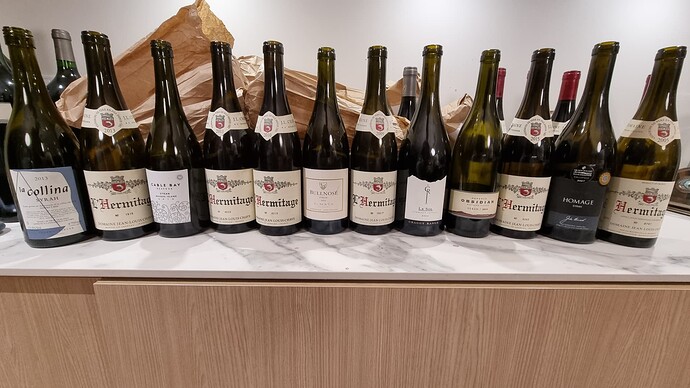What does ‘Brett’ smell like?
4-EP, or ‘Band-Aid’ aroma, is the main contributor to ‘Brett’ character and is considered the general marker for Brettanomyces. Wine with ‘Brett’ presents with more than just a Band-Aid aroma, however, with 4-EG adding ‘smoky’ and ‘spicy’ notes, and 4-EC adding ‘savoury’, ‘sweaty/cheesy’ and ‘barnyard/animal’ nuances. The palate can also be affected; with diminished fruit flavour intensity and a drying/metallic aftertaste.
Why does ‘Brett’ smell different in different wines?
‘Brett’ compounds are usually always present together, albeit in different ratios. These ratios have been shown to be related to the different levels of their precursors naturally present in different grape varieties. Some typical ratios in varieties, and likely sensory effects compared to 4-EP alone, are shown below.
| Variety |
4-EP:4-EG ratio |
Likely sensory effect |
| Pinot Noir |
3:1 |
More leather and barnyard, spicy |
| Cabernet Sauvignon, Nebbiolo |
9:1 |
Similar to 4-EP alone, but with a pungent spice |
| Shiraz |
23:1 |
Similar to 4-EP alone, pure Band-Aid |
Thus while a ‘Brett’-affected Shiraz might smell like pure Band-Aid, a ‘Brett’-affected Pinot Noir will possibly smell more ‘animal’, ‘barnyard’ and ‘spicy’, perhaps akin to and often confused with savoury characters of Pinot Noir wines and heavily toasted or spicy oak flavours.
What are the sensory thresholds for ‘Brett’?
In a French Cabernet, Chatonnet and colleagues (1992) reported that the sensory perception threshold for 4-EP was 605 µg/L. Studies at the AWRI found a lower threshold of 368 µg/L for Australian Cabernet Sauvignon wines.
Further work at the AWRI has shown that the threshold of 4-EP depends very much on the style and structure of the wine, with the intensity of other wine components able to mask ‘Brett’ character. For example, the 4-EP threshold in a ‘green’ Cabernet Sauvignon wine, and in a heavily oaked Cabernet Sauvignon wine, increased to 425 and 569 µg/L respectively. As a wine ages, primary fruit flavours generally reduce and this can also sometimes reveal ‘Brett’ characters that have earlier been masked by fruit characters.
Aroma threshold (µg/L)1
[The table formatting was lost here in the cutting and pasting.- John]
4-EP 4-EG 4-EC
French Bordeaux Cabernet Sauvignon2 605 110 –
Australian Cabernet Sauvignon3 368 158 774
Australian ‘green’ Cabernet Sauvignon 425 209 1131
Australian ‘oaky’ Cabernet Sauvignon 569 373 1528
- ASTM three-alternative forced choice method, ascending concentration series
- Chatonnet et al. 1992
- Bramley et al 2007
More information about sensory thresholds can be found here
Are we becoming better at detecting ‘Brett’ or am I just super-sensitive?
Wines affected by ‘Brett’ usually contain both 4-EP and 4-EG. When present together there is an enhanced effect, and a lowering of the threshold. This was reported by Chatonnet and colleagues in 1992. Originally reporting the 4-EP threshold alone as 605 µg/L, this reduced to 369 µg/L when present with 37 µg/L of 4-EG (9:1 ratio). AWRI studies have shown the 4-EP threshold alone as 368 µg/L. but when combined with 4-EG the threshold is much lower than this. So if you are smelling ‘Brett’ in wines and having them analysed at levels below 200 µg/L then you might not be super-sensitive, it might be just the real threshold for the combined Brett compounds in that wine style. In addition, as with many aroma compounds, there is a learning effect and with repeated exposure to the aroma of ‘Brett’, it will be detected more easily.
In consumer testing, levels of 4-EP of 600 µg/L with 4-EG of 200 µg/L were sufficient to strongly reduce consumer preference, even though consumers would most likely not have been able to describe the flavour and in fact only 4% of consumers had heard of ‘Brett’.
Misdiagnoses of ‘Brett’
The AWRI helpdesk quite often receives wine samples suspected of being affected by Brett, yet a quick smell, and analysis if needed, reveals the wine to be ‘Brett’-free. It seems that ‘Brett’ is sometimes being blamed for other wine faults – including sulfidic characters (‘sewerage’, ‘sweaty’, ‘rotting onions’), low levels of oxidation that reduce fruit intensity and add a ‘savoury’ note and smoke taint. It is important to know what 4-EP and 4-EG smell like for your own sensory memory bank and to be able to identify Brett problems in the winery. Wine aroma kits are available for purchase, or you could attend one of the AWRI’s tastings.
